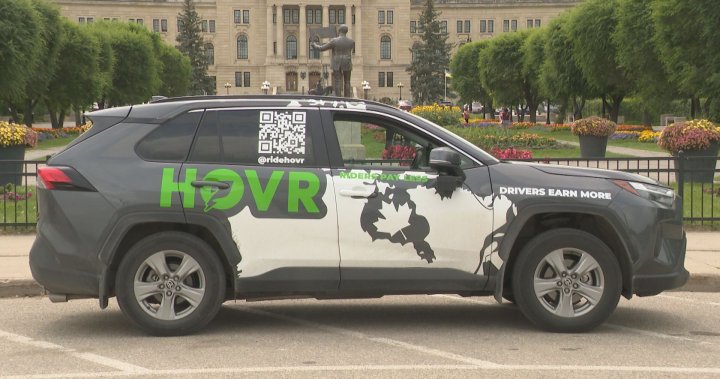A Toronto couple has transformed their ambitious cross-country journey into a potential transportation revolution, unveiling a new rideshare application designed specifically for long-distance travel across Canada’s vast expanse.
Michelle Wilson and Ethan Barnes launched their platform, RideConnect Canada, while simultaneously embarking on what they hope will become a record-setting tour of all 10 provinces in just 14 days. Their 10,000-kilometer odyssey serves as both a promotional vehicle and a real-world test for their application’s functionality in diverse Canadian settings.
“We’ve always been frustrated by the limited options for affordable inter-city travel,” Wilson explained during a virtual press conference from their stopover in Winnipeg. “Flying between major centers costs a fortune, and many smaller communities have little to no public transportation connecting them to the rest of the country.”
The app, now available on both major mobile platforms, differs from conventional rideshare services by focusing exclusively on journeys exceeding 100 kilometers. Users can register as either drivers or passengers, with an algorithm matching travel companions based on destination, timing preferences, and user ratings.
Transportation economics expert Dr. Vanessa Nguyen from the University of British Columbia believes the timing could be ideal for such a service. “With inflation driving up the cost of individual travel and environmental consciousness growing among younger Canadians, a platform facilitating shared long-distance journeys addresses multiple contemporary concerns simultaneously,” she noted in an interview with CO24 Business.
The couple’s journey has already generated substantial attention on social media, with their hashtag #RideConnectCanada accumulating over 50,000 mentions across platforms within the first week of their tour. Their approach represents a grassroots marketing strategy rarely seen in the tech startup world.
“We wanted to demonstrate our confidence in both the concept and the Canadian driving community,” Barnes said. “Each province presents unique challenges – from the dense urban corridors of Ontario and Quebec to the sprawling landscapes of the Prairies and the geographical obstacles of the Rockies and Maritimes.”
Safety concerns, often paramount in discussions about ridesharing, have been addressed through multiple verification layers, including government ID verification, real-time journey tracking, and an emergency contact system. The company has also partnered with a national insurance provider to offer specialized coverage for both drivers and passengers during shared journeys.
According to Canada News, early adoption appears strongest in university towns and among young professionals, demographics that frequently travel between major centers but may lack personal vehicles or find existing transportation options prohibitively expensive.
The Canadian transportation landscape has seen limited innovation in recent decades, with the collapse of Greyhound’s national service in 2021 leaving significant gaps in the inter-city network. While Via Rail continues to serve portions of the country, its routes remain limited and schedules inflexible for many travelers.
Industry observers watching the couple’s journey note that their success could potentially influence how Canadians conceptualize long-distance travel. “If they can demonstrate a viable model that connects communities while reducing individual carbon footprints, it could represent a meaningful evolution in our national transportation ecosystem,” remarked transportation policy analyst Jerome Mackenzie.
As Wilson and Barnes continue their coast-to-coast journey, they’re collecting data and user feedback to refine their platform before a planned expansion of features next quarter. Their ultimate vision extends beyond simple ridesharing to creating what they describe as “a comprehensive mobility network connecting every significant population center across the country.”
With fuel prices continuing their upward trajectory and environmental considerations increasingly influencing travel decisions, could community-based transportation solutions like RideConnect Canada represent the future of how we navigate our country’s enormous geography?










